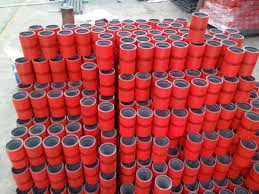- Afrikaans
- Albanian
- Amharic
- Arabic
- Armenian
- Azerbaijani
- Basque
- Belarusian
- Bengali
- Bosnian
- Bulgarian
- Catalan
- Cebuano
- Corsican
- Croatian
- Czech
- Danish
- Dutch
- English
- Esperanto
- Estonian
- Finnish
- French
- Frisian
- Galician
- Georgian
- German
- Greek
- Gujarati
- Haitian Creole
- hausa
- hawaiian
- Hebrew
- Hindi
- Miao
- Hungarian
- Icelandic
- igbo
- Indonesian
- irish
- Italian
- Japanese
- Javanese
- Kannada
- kazakh
- Khmer
- Rwandese
- Korean
- Kurdish
- Kyrgyz
- Lao
- Latin
- Latvian
- Lithuanian
- Luxembourgish
- Macedonian
- Malgashi
- Malay
- Malayalam
- Maltese
- Maori
- Marathi
- Mongolian
- Myanmar
- Nepali
- Norwegian
- Norwegian
- Occitan
- Pashto
- Persian
- Polish
- Portuguese
- Punjabi
- Romanian
- Russian
- Samoan
- Scottish Gaelic
- Serbian
- Sesotho
- Shona
- Sindhi
- Sinhala
- Slovak
- Slovenian
- Somali
- Spanish
- Sundanese
- Swahili
- Swedish
- Tagalog
- Tajik
- Tamil
- Tatar
- Telugu
- Thai
- Turkish
- Turkmen
- Ukrainian
- Urdu
- Uighur
- Uzbek
- Vietnamese
- Welsh
- Bantu
- Yiddish
- Yoruba
- Zulu
Understanding Vacuum Hose Couplings for Efficient Automotive Applications
Understanding Vacuum Hose Couplings Features, Functions, and Applications
Vacuum hose couplings are essential components in various industrial and automotive applications, serving as the connective tissue between vacuum hoses and systems that require efficient air and fluid management. They play a crucial role in ensuring airtight connections, preventing leaks, and facilitating the transfer of gases or liquids under suction. This article explores the features, functions, and applications of vacuum hose couplings, highlighting their importance in modern technology.
Features of Vacuum Hose Couplings
Vacuum hose couplings come in various shapes and sizes, designed to accommodate different types of hoses and systems. Some common features include
1. Material Composition Most couplings are made from durable materials such as stainless steel, brass, or high-quality plastics. These materials are chosen for their resistance to corrosion, heat, and chemical exposure, which is vital in maintaining the integrity of vacuum systems.
2. Sealing Mechanisms Effective sealing is paramount in vacuum applications. Many couplings utilize O-rings, gaskets, or flanged connections to create a tight seal that prevents air leaks. The design of these seals is often tailored to specific pressure and temperature conditions.
3. Ease of Installation Many vacuum hose couplings are designed for quick and easy installation and removal. Features such as snap-on connections, threaded interfaces, and clamping mechanisms enable technicians to make adjustments efficiently, reducing downtime in operations.
4. Compatibility and Standardization With various sizes and shapes available, it’s crucial for vacuum hose couplings to be compatible with standard hose dimensions and fitting types. This compatibility ensures that they can be used across multiple applications without the need for specialized tools or modifications.
Functions of Vacuum Hose Couplings
The primary function of vacuum hose couplings is to connect hoses while maintaining a secure and airtight environment
. Some specific functions include1. Leak Prevention Ensuring that no air infiltrates the vacuum system is vital for maintaining the efficiency of processes like suction, extraction, or conveying. Properly designed couplings are essential for leak prevention, which can otherwise cause a loss of pressure and impact system performance.
vacuum hose coupling

2. Pressure Management In many applications, vacuum systems operate under specific pressure conditions. Couplings need to withstand these pressures, and their design often incorporates features that account for variations in pressure and temperature within the system.
3. Contamination Control In industries such as pharmaceuticals, food processing, and electronics manufacturing, contamination control is critical. Vacuum hose couplings help maintain a clean environment by preventing the ingress of dust, moisture, and other contaminants.
4. Versatile Application Support Different industries utilize vacuum systems for various purposes, from automotive brake systems to food packaging. The versatility of vacuum hose couplings allows them to be employed in a broad array of applications, making them indispensable in many sectors.
Applications of Vacuum Hose Couplings
The versatility of vacuum hose couplings enables their use in several applications
1. Automotive Industry Vacuum hose couplings are essential in modern vehicles for systems that rely on vacuum pressure, such as braking systems, emissions control, and engine intakes. They ensure efficient performance and enhance safety by preventing system failures.
2. Manufacturing Processes In manufacturing, vacuum hose couplings are employed in material handling processes, such as the conveyance of powder or granules, enabling efficient loading and unloading of materials.
3. Food and Beverage Industry These couplings play a crucial role in food packaging processes, where maintaining a vacuum seal is necessary to extend the shelf life of products by preventing spoilage.
4. Laboratory Applications Various laboratory equipment utilizes vacuum hose couplings for processes that require precise suction, such as filtration, vacuum distillation, and drying.
Conclusion
Vacuum hose couplings are vital for the effective functioning of systems that require the management of gases and liquids under vacuum conditions. Their durability, effective sealing capabilities, and versatility across industries ensure that they remain an indispensable element in both industrial processes and everyday applications. As technology advances, the design and functionality of vacuum hose couplings will continue to evolve, further enhancing their efficiency and application in various fields. Understanding their importance can help engineers and technicians select the right components for their specific systems, ultimately ensuring reliability and performance in vacuum applications.
-
Tubing Pup Joints: Essential Components for Oil and Gas OperationsNewsJul.10,2025
-
Pup Joints: Essential Components for Reliable Drilling OperationsNewsJul.10,2025
-
Pipe Couplings: Connecting Your World EfficientlyNewsJul.10,2025
-
Mastering Oilfield Operations with Quality Tubing and CasingNewsJul.10,2025
-
High-Quality Casing Couplings for Every NeedNewsJul.10,2025
-
Boost Your Drilling Efficiency with Premium Crossover Tools & Seating NipplesNewsJul.10,2025







